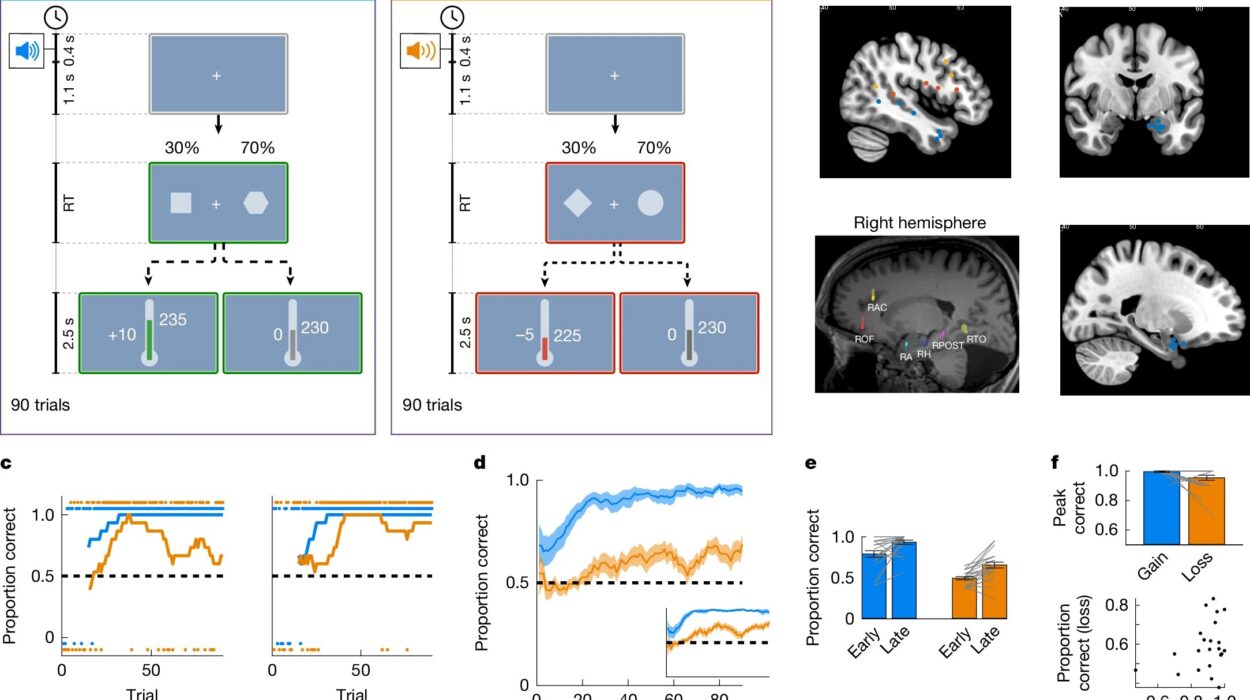Imposter syndrome is one of the most pervasive and psychologically complex experiences affecting high-achieving individuals across all walks of life. It is a deeply rooted internal struggle characterized by persistent self-doubt, feelings of inadequacy, and the belief that one’s accomplishments are undeserved. Despite clear evidence of competence, success, and recognition, those suffering from imposter syndrome remain haunted by the fear of being “found out” as a fraud. This phenomenon transcends gender, culture, profession, and age—it can affect a new graduate, an artist, a scientist, or even a CEO.
Overcoming imposter syndrome is not simply about gaining confidence or positive thinking; it requires a deeper understanding of human cognition, emotion, and identity. It involves exploring how our minds form self-beliefs, how perfectionism and social comparison shape our sense of worth, and how cognitive distortions distort our reality. The journey to overcoming imposter syndrome is a process of psychological awareness, emotional regulation, and behavioral transformation.
Understanding Imposter Syndrome
The term imposter phenomenon was first coined in 1978 by psychologists Pauline Clance and Suzanne Imes. Through their research, they observed that many high-achieving women attributed their success not to ability or intelligence, but to luck, timing, or other external factors. These individuals felt like frauds, living in constant fear of exposure. Over time, the term “imposter syndrome” became widely adopted to describe this experience in both men and women.
At its core, imposter syndrome is not a mental illness but a psychological pattern. It reflects the gap between external success and internal validation. People with imposter feelings often exhibit perfectionistic tendencies, chronic self-criticism, and difficulty accepting praise. Even when they achieve remarkable things, they tend to discount their performance as unremarkable or accidental.
Imposter syndrome manifests in various ways: some individuals overwork to compensate for their perceived inadequacy; others procrastinate or avoid new challenges out of fear of failure. Despite the outward appearance of competence, they experience an inner turmoil—anxiety, guilt, and an ever-present sense of not belonging.
The Psychological Mechanisms Behind Imposter Syndrome
Imposter syndrome arises from a complex interplay of cognitive, emotional, and social factors. From a psychological perspective, it is rooted in distorted thinking patterns and maladaptive self-perceptions. Cognitive distortions—such as all-or-nothing thinking, discounting positive feedback, and overgeneralization—contribute to the persistence of imposter feelings.
When an individual receives recognition or praise, their brain processes it differently from someone without imposter tendencies. Instead of internalizing success, they rationalize it away. A common thought might be, “I just got lucky,” or “They don’t really know how little I understand.” This cognitive dissonance—between external evidence of success and internal disbelief—creates ongoing emotional stress.
Neuroscientifically, this may be tied to overactivity in the brain’s threat-detection systems. The amygdala, responsible for processing fear and anxiety, becomes hypervigilant to potential threats of failure or criticism. At the same time, self-referential regions of the brain such as the medial prefrontal cortex may perpetuate self-critical narratives. The result is a constant psychological tension between competence and self-doubt.
Emotionally, imposter syndrome is maintained through shame and fear. Shame arises when one feels fundamentally unworthy of success, while fear manifests as anxiety about being exposed as a fraud. These emotions can become habitual responses reinforced by past experiences of failure, perfectionistic parenting, or competitive environments.
The Role of Personality and Early Experiences
Certain personality traits and early life experiences can increase vulnerability to imposter syndrome. Perfectionism is one of the most common personality factors associated with it. Perfectionists set unrealistically high standards for themselves and interpret anything less than flawless performance as failure. Even when they succeed, they focus on minor imperfections, reinforcing feelings of inadequacy.
Family dynamics also play a crucial role. For example, children who grow up in households where achievement is excessively emphasized may internalize the belief that self-worth depends solely on performance. Others who were frequently compared to siblings or peers may develop a constant need to prove themselves. Similarly, being labeled “the smart one” or “the talented one” can create pressure to maintain an idealized self-image, leading to anxiety about not living up to expectations.
Attachment theory provides further insight. Individuals with insecure attachment patterns—those who experienced inconsistent validation or overcritical caregiving—may struggle to develop a stable internal sense of worth. As adults, they become dependent on external approval, making them more prone to imposter feelings when facing evaluation or success.
The Social and Cultural Context of Imposter Syndrome
Imposter syndrome does not occur in isolation; it is shaped by social and cultural forces. In highly competitive environments—such as academia, technology, medicine, or the arts—there is constant comparison and performance pressure. The culture of “constant achievement” fuels perfectionism and self-doubt, making individuals feel they are never doing enough.
Social comparison theory explains that humans evaluate their abilities and success by comparing themselves to others. In the digital age, this comparison has intensified through social media, where curated images of success create unrealistic benchmarks. People begin to feel inferior not because they lack ability, but because they perceive everyone else as effortlessly competent and confident.
Cultural background also influences imposter experiences. In collectivist cultures, where humility is highly valued, self-promotion may feel uncomfortable or even shameful, reinforcing the tendency to downplay achievements. Conversely, in individualistic societies that prize independence and success, individuals may feel unworthy if they do not constantly meet idealized standards of excellence.
Gender dynamics further complicate the issue. Research has shown that women and minorities may experience imposter syndrome more frequently due to systemic biases, stereotype threat, and underrepresentation. When individuals feel they are the “only one” in a particular environment, they may interpret normal struggles as signs of inadequacy, rather than as part of the learning process.
The Cognitive Traps of Imposter Thinking
To overcome imposter syndrome, it is essential to recognize the thinking traps that sustain it. These cognitive patterns distort reality and reinforce self-doubt. Common ones include the tendency to discount success, attribute achievements to luck, overestimate the competence of others, and underestimate one’s own.
One of the most powerful traps is “the attribution error.” Those with imposter syndrome attribute their failures to internal causes (“I’m not good enough”) and their successes to external causes (“I just got lucky”). Over time, this creates a biased mental model that always confirms their perceived inadequacy.
Another major trap is “the comparison fallacy.” People with imposter syndrome habitually compare their internal struggles with the external achievements of others. Because others’ insecurities are invisible, the comparison is inherently unfair. They assume everyone else feels confident and capable, while they alone are anxious or uncertain. This illusion perpetuates feelings of isolation and inferiority.
The “expert illusion” is another variant, where individuals believe they must know everything before they can claim competence. They fear that any lack of knowledge or skill disqualifies them from being successful. This leads to chronic overpreparation, procrastination, or avoidance of new challenges—all of which reinforce the imposter cycle.
Recognizing the Imposter Cycle
Psychologists describe the imposter experience as a cyclical process. It typically begins with a challenge, such as a new project, promotion, or opportunity. The individual initially feels anxiety and self-doubt, fearing they will fail. In response, they either overwork to prove themselves or procrastinate due to fear.
If the project succeeds, the individual attributes success to external factors—luck, extra effort, or others’ help—rather than ability. The temporary relief they feel soon gives way to renewed anxiety about the next challenge. The cycle repeats, strengthening the belief that they are imposters living on borrowed success.
Breaking this cycle requires conscious awareness and cognitive restructuring. One must learn to reinterpret both success and failure in a balanced way, replacing irrational beliefs with realistic self-assessments.
Psychological Approaches to Overcoming Imposter Syndrome
The process of overcoming imposter syndrome begins with awareness. Recognizing imposter thoughts as cognitive distortions rather than facts is the first step. Cognitive-behavioral therapy (CBT), one of the most effective evidence-based approaches, focuses on identifying and reframing distorted thinking. For example, instead of thinking “I don’t deserve this success,” one can replace it with “I worked hard and earned this opportunity.”
CBT also encourages behavioral experiments. Individuals practice accepting compliments without deflecting them, setting realistic goals, and observing how others respond to their performance. Over time, repeated positive experiences weaken the internalized belief of fraudulence.
Another powerful approach is self-compassion therapy, pioneered by psychologist Kristin Neff. Self-compassion involves treating oneself with the same kindness and understanding that one would offer to a friend. Research has shown that self-compassion reduces shame, increases resilience, and promotes healthy motivation. Instead of striving for perfection, individuals learn to accept imperfection as part of being human.
Mindfulness-based interventions are also effective. Mindfulness helps individuals observe their thoughts and emotions without judgment, reducing the emotional reactivity associated with imposter feelings. By cultivating awareness of the present moment, people can separate who they are from the transient thoughts that arise in their minds.
The Importance of Emotional Regulation
Emotions are central to the experience of imposter syndrome. Fear, shame, and anxiety drive the avoidance and overcompensation behaviors that maintain it. Learning to regulate these emotions through psychological techniques is crucial.
Emotion regulation involves recognizing emotions as signals rather than truths. Fear may signal uncertainty; shame may indicate vulnerability. Instead of suppressing these feelings, individuals can acknowledge them, explore their origins, and reframe their meaning. Techniques such as deep breathing, journaling, and guided imagery can help calm the physiological arousal that accompanies imposter anxiety.
Therapeutic methods like Acceptance and Commitment Therapy (ACT) encourage individuals to accept uncomfortable emotions while committing to meaningful action. Rather than trying to eliminate self-doubt entirely, ACT promotes psychological flexibility—acting according to one’s values even in the presence of fear.
The Role of Social Support and Connection
Isolation magnifies imposter syndrome, while connection helps diminish it. Sharing experiences with trusted friends, mentors, or colleagues normalizes self-doubt and reduces shame. When individuals realize that others—especially successful people—have similar insecurities, the illusion of being uniquely inadequate begins to dissolve.
Mentorship is particularly valuable. Mentors can provide perspective, validation, and feedback grounded in experience. They can help mentees reframe their narratives from “I don’t belong here” to “I’m learning and growing.” Research consistently shows that supportive professional relationships are protective against the psychological distress associated with imposter feelings.
Workplaces and institutions also play a crucial role. Environments that emphasize collaboration over competition, recognize effort as well as results, and promote psychological safety can reduce the prevalence of imposter experiences. Leaders who share their own struggles openly create cultures where authenticity is valued over perfection.
Cultivating a Healthy Sense of Self
Long-term recovery from imposter syndrome requires building a stable, realistic sense of self. This involves developing intrinsic self-worth—valuing oneself for who one is rather than what one achieves. When self-esteem is based solely on achievement, every failure threatens one’s identity. By shifting focus from performance to personal growth, individuals create a more resilient foundation for self-acceptance.
Developing a “growth mindset,” a concept introduced by psychologist Carol Dweck, is key to this transformation. A growth mindset recognizes that abilities can be developed through effort and learning, rather than being fixed traits. This perspective reframes mistakes and failures as opportunities for improvement rather than evidence of incompetence.
Another aspect of self-development involves redefining success. Instead of viewing success as flawless performance or external validation, individuals can view it as progress, learning, and contribution. Gratitude practices, reflective journaling, and self-affirmation exercises help internalize a balanced self-concept.
The Neuroscience of Confidence and Self-Doubt
From a neuroscientific perspective, confidence and self-doubt are influenced by brain networks involved in self-evaluation, motivation, and reward processing. The prefrontal cortex helps regulate thoughts and emotions, while the anterior cingulate cortex monitors errors and conflict. In individuals with chronic self-doubt, hyperactivity in these regions can lead to excessive self-monitoring and rumination.
However, neuroplasticity—the brain’s ability to change through experience—means that these patterns are not fixed. Regular practice of positive self-reflection, mindfulness, and affirming behaviors can rewire neural circuits over time. Repeated exposure to success and reinforcement of internal validation gradually strengthen the brain’s reward systems associated with self-efficacy and confidence.
Overcoming Imposter Syndrome in Specific Contexts
In academia, imposter syndrome is rampant among students, researchers, and faculty. The pressure to publish, compete for funding, and meet high intellectual standards fosters chronic self-comparison. Universities can mitigate this by promoting mentorship, open discussion of failure, and acknowledgment of systemic pressures.
In the workplace, imposter feelings often emerge after promotions or when entering new roles. Employees can benefit from structured feedback, recognition of contributions, and professional development opportunities. Leaders can model vulnerability by admitting their own mistakes, creating an environment of shared humanity.
In creative professions, where success is subjective, imposter syndrome can be particularly intense. Artists and writers must learn to detach their self-worth from external approval and cultivate intrinsic motivation—valuing the creative process itself over validation or acclaim.
The Intersection of Imposter Syndrome and Identity
For marginalized groups, imposter syndrome intersects with systemic bias and identity-based challenges. Women, people of color, and first-generation professionals often experience “stereotype threat”—the anxiety of confirming negative stereotypes about their group. This can amplify imposter feelings and emotional exhaustion.
Overcoming imposter syndrome in these contexts requires not only personal effort but structural change. Representation, inclusion, and equitable access to opportunities are essential. Psychological resilience grows when individuals see others like themselves succeeding and when institutions actively counteract bias.
Healing Through Self-Acceptance and Purpose
Ultimately, overcoming imposter syndrome is not about eliminating self-doubt but transforming one’s relationship with it. Self-doubt can coexist with competence; humility can coexist with confidence. The key is learning to act in alignment with values despite uncertainty.
Psychologically, healing occurs when individuals shift from seeking external validation to living authentically. They learn to trust their abilities, embrace imperfection, and find meaning in contribution rather than comparison. This deeper sense of purpose creates resilience that transcends the temporary fluctuations of confidence.
Self-acceptance does not mean complacency—it means acknowledging both strengths and limitations without judgment. It allows individuals to see themselves as evolving beings, always capable of learning, changing, and growing.
Conclusion
Imposter syndrome is a deeply human experience, born from our desire to belong, to achieve, and to be seen as capable. It is sustained by cognitive distortions, social pressures, and perfectionistic ideals—but it is not insurmountable. Through self-awareness, emotional regulation, cognitive restructuring, and supportive relationships, individuals can rewrite their internal narratives.
Overcoming imposter syndrome is ultimately a journey toward self-trust. It involves recognizing that worth is not earned by flawless performance but inherent in our existence. When we embrace both our competence and our vulnerability, we transcend the illusion of fraudulence and step fully into authenticity.
In the end, the path to overcoming imposter syndrome is not about becoming someone else—it is about finally allowing ourselves to be who we truly are.






